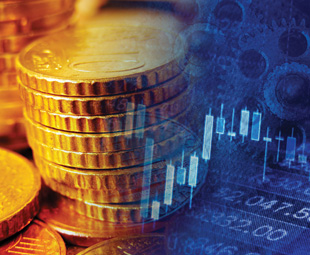Waiting for the other shoe to drop

Both the government and the public breathed a sigh of relief when the second-quarter gross domestic product (GDP) results showed an exit from the recession and exceeded the expectations of many economists
Our own forecast was proudly close to the mark. While the statistics make up a portion of the growth story, unfortunately, so does confidence.
The agricultural sector’s recovery from the drought and an improvement in mining have been the main drivers of the country’s exit from the recession. The recovery is important as it provides for increased activity in sectors such as land transport.
The majority of goods transported over the past few months were mining products followed by manufactured food, beverages, tobacco and agricultural products. Indeed, the quarterly numbers showed positive growth in all sectors excluding government and construction.
With the short recession seemingly in the rear-view mirror, many will ask when momentum will begin to take effect. The global economy and our major trading partners continue to show improved growth prospects, as reflected by the contribution of vehicle exports in 2017.
The stronger rand has pushed vehicle and food inflation down, and the lower inflation outlook led to a cut in interest rates in July, providing a potential boost to credit growth. It would appear that macroeconomic indicators remain poised on the side of growth.
Much of 2017 has been characterised by political shocks that have dented business and consumer confidence. When making capital investments, businesses consider the expected future trading conditions. While the start of 2017 showed resilience, as many believed the economy had successfully weathered the storm, the latest results show a return to negative sentiment and a decline in growth of fixed capital investment.
Business confidence also remains strongly linked to the consumer. A weak business climate limits real wage growth, bonuses and promotions. Consumers then negatively perceive their own expected future income, which is a strong determinant when considering the purchase of new vehicles.
We have seen this as consumers have remained reluctant to commit to new vehicle purchases throughout the year. There has also been a decline in credit extensions for leasing finance.
Much of the transport numbers reflect both sides of the economy. The latest releases have showed improvements in demand for bakkies and light commercial vehicles, which we believe to be a reflection of the positive numbers out of agriculture and manufacturing.
Conversely, the trucking industry reflects the subdued fixed capital investment environment and low business confidence. In the latest manufacturing release, the Purchasing Managers’ Index (PMI) showed a decline, despite suggestions of an improving manufacturing sector.
This effect highlights the fact that confidence may not always accurately reflect the situation in real time.
Unfortunately, while the political situation remains unpredictable, a lack of confidence will place certain economic decisions on hold and transport operators looking for “green shoots” will be left waiting for “the other shoe to drop”.
SAM Rolland is an automotive and transport economist at Econometrix. He is responsible for writing the Quarterly Automotive Outlook at Econometrix, as well as commentary and analysis on vehicle sales and transport price drivers. Prior to joining Econometrix, Rolland spent a number of years as an economist for the National Treasury of South Africa. He has also worked at Bloomberg New Energy Finance as a research analyst in conventional power.
Published by
Focus on Transport
focusmagsa




